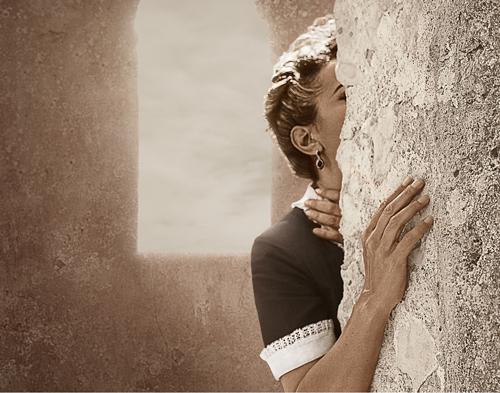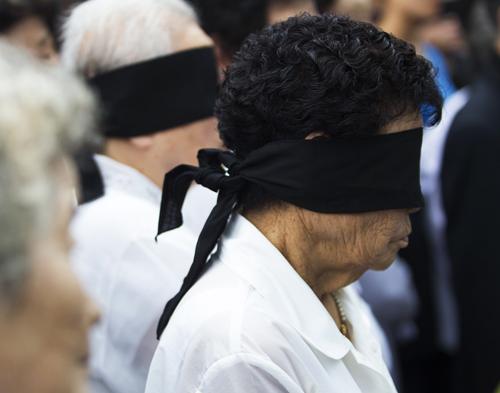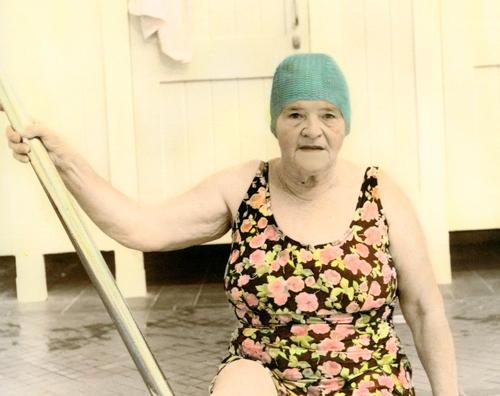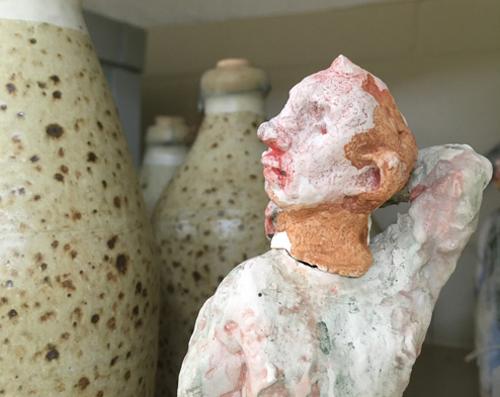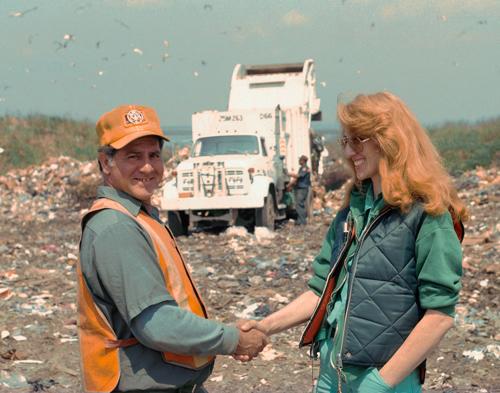.jpg)
“Ghana, West Africa, 2010: Child herders seeking shelter from the rain, as they keep a watchful eye on cows they are herding. The children say they are not allowed to bring the cows home in bad weather for fear that they will be beaten. They all wish they could go to school instead of working every day herding the animals.”
In a year that began with drought and bushfire, rapidly segueing into global pandemic; in a world in which the tiny minority rich elite extract more and more of the wealth to themselves forcing the majority into precarity and poverty, and some 800 million into starvation; at a time when movements such as #MeToo, Black Lives Matter and Extinction Rebellion highlight the most basic flaws in our sociopolitical systems; in such conditions there is much need for compassion. And yet, as I write this, the year is barely half over. This is not some brief anomalous moment; this is our norm. As Ian Milliss argues in his essay in this issue of Artlink, the struggle here is not between notions of political left and right, but “compassion and mutual aid versus … dominance and individualism.”
Neo-Darwinists and neoliberals have argued that humans are naturally competitive. In their view it was our innate aggression that clawed our species to the top of the food chain. In the past twenty years there has been much solid research to demonstrate, quite to the contrary, that compassion is a significant human capacity, one that evolved rapidly in hominins and has played a central role in the remarkable flourishing of our species.[1] In archaeology, forensic examination of the material record reveals evidence of compassionate behaviour in hominins predating signs of human‑to‑human violence by more than a million years.[2] Social archaeologists and evolutionary psychologists have pieced together an understanding of the importance of caring, collaboration and active imagination in the exponential development of Homo sapiens following the last great ice age.[3]
With the recent availability of non-invasive methods such as fMRI, neurophysiologists have mapped the “circuits” in the brain activated by compassionate behaviour in both giver and receiver.[4] Both trigger the release of oxytocin, a chemical that generates a sense of wellbeing associated with human bonding and pro-social behaviour. From these physiological data, psychologists have developed an overarching biopsychosocial model for compassion; one that is proving scalable across the personal, the therapeutic, the collective, the corporate and the political.[5] This continuity in the understanding of compassion spanning the micro and the macro is important, because the problems we face arise amid an entanglement of identity, culture, community, economy, and polity.[6]
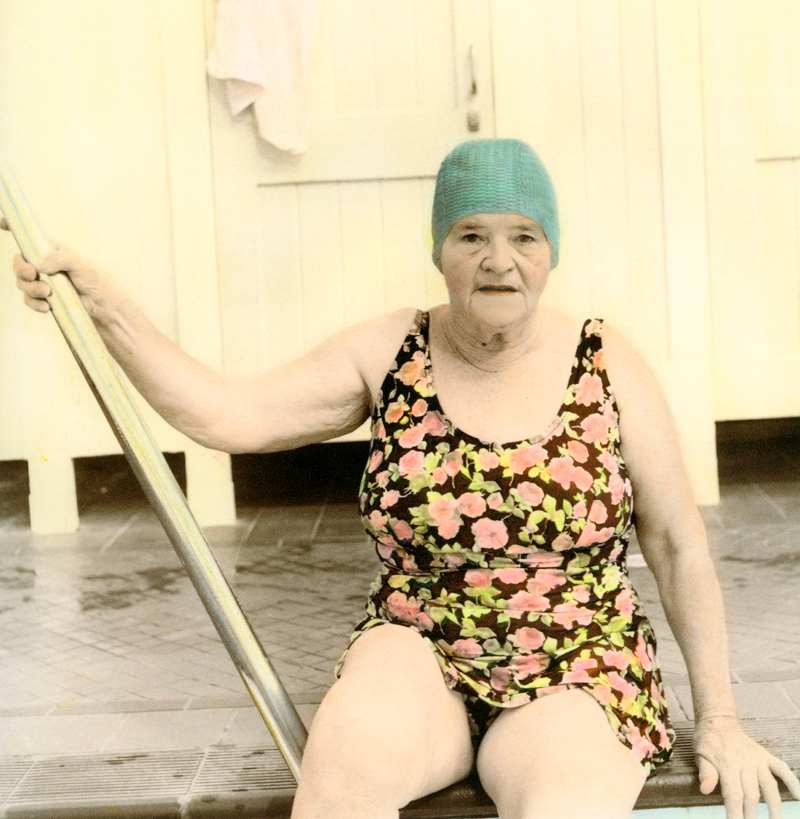
“I left school when I was fifteen. I worked in factories and as a shop assistant and doing other people’s housework until I was past 50. I joined the hydrotherapy group about six years ago. I’ve got arthritis in my knees and I need to keep exercising. I love the group. We have a lot of fun. Once your family goes it’s a void for a couple of years. I felt a bit dull and frustrated for a while but when I joined the group my life became more social. You have to make the most of your life. I do courses at the Council of Adult Education. This year I’m doing decorative framing and motor mechanics.”
So, what exactly is compassion? Unlike sympathy (feeling sorry for) or empathy (experiencing the feelings of others within one’s self), compassion combines a recognition of and sensitivity to human suffering and need with a motivation to assuage that suffering and need through action. Not just feeling but acting, and acting wisely. Doing the wrong thing for the “right” reason is not compassionate; at best it is in error, at worst hypocrisy. It is not just about doing something that feels good, it must do good. It is no accident that our capacity for compassion evolved in tandem with our growing intelligence and both functions occupy the more recently evolved regions of the brain.
The much older parts of the brain drive the more fundamental rapid responses associated with flight, fight or freeze. They enable us to deal with danger (real or perceived) and act immediately. In most animals, once the danger has passed the system returns to normal. But once triggered in humans, who have developed the capacity to understand the relationship between past, present and potential future, of cause and effect, this system is harder to close down. Thus it is that hate spreads faster than love, fear faster than mutuality. And, as those in business know, the things that travel quickest make most money. It is not sex that drives advertising, but fear and anxiety. Politicians and tabloid editors alike know which emotions galvanise their target audience, making them susceptible to claims that their calmer selves may resist.
In this issue we look at some of the ways in which art and artmaking can engage the slower, deeper, more critically aware aspects of our perceptual experience. Calming, connecting, imagining, acting. At the centre of these is compassion.
.jpg)
“Body, remember not only how much you were loved”
Constantine P. Cavafy, from the poem “Body Remember”
If suffering is to be recognised, it must first be noticed and acknowledged. With passionate and poetic precision, Ali Gumillya Baker speaks to the pain and grief, the depths of suffering inflicted historically and to this day upon Indigenous peoples. She points to the “lack of any real loving reparation for stolen lives,” for a lack of appropriate memorials to replace the colonialist stone and metal statuary that celebrate reputations built on slavery and genocide, now the target of global protests.
Alison Stieven-Taylor looks to the work of a new breed of visual journalists who embody the risk-taking of entrepreneurship in pursuit not of monetary profit but in order to make inequity visible that it might drive to social justice. Kelly Hussey-Smith discusses the work of the Bangladeshi photographer, writer and activist Shahidul Alam who has established three interconnected organisations – a media agency, an educational institute and an international photo-art festival – through which to resist the hegemony of western globalised media narratives, to challenge autocratic power and to use the nuance of art to evoke those things that remain unsayable.
Blur Projects, a team of artists with disability led by Belinda Mason, create works that highlight the situation of those whose intersectional disadvantage leaves them outside the larger single-issue civil rights movements. Central to their methodology is a listening, sharing and wholly collaborative modality. As the respected Māori lawyer and disability activist Dr Huhana Hickey MNZM and MInstD observes when discussing the compound impacts of disadvantage that underpin the portrait of Roberta on the cover of this issue:
Any steps towards addressing domestic violence against disabled people has failed due to a lack of focus on disability within Māori culture and communities. This is in part due to a lack of accessible services, but also to the fact that while violence against disabled people is domestic or employee/carer related, it is also due to a lack of implementation of the United Nations Convention on the Rights of Persons with Disabilities (UNCRPD) in New Zealand law, failing to recognise the need. This failure to bring our laws into compliance with the UNCRPD demonstrates a lack of compassion on the part of the Crown to actively ensure disabled people are safe and well. Ableism and ignoring the needs and cultural specificity of disabled people in our communities has led to a toxic form of violence derived from historical and colonial abuse that permeates all levels of experience for disabled Māori people.[7]
.jpg)
“He is father to five of my children. He was really abusive, he used to beat the heck out of me. He put his knee on the back of my scapula and broke it. I hated Saturday night. When he drinks alcohol, he would come back and abuse me. I would be black and blue from the beatings ... He was a big league star. He played rugby league for the Bay of Plenty and represented New Zealand.”
Compassion is very different from pity. Pity is dispensed from a position of superiority, removed from the sufferer and all too easily provokes feelings of shame in the pitied. As Ian Milliss points out, it is the mutuality of compassion that is important. Ginger Gorman writes about the creation of On Thin Ice, an exhibition made in collaboration with people who use, or who have been users of, methamphetamine – a project commissioned by Tuggeranong Arts Centre. She emphasises the importance of sharing and the courage it takes for these young people to open up about their situation, given the societal opprobrium evinced toward drug addiction.
Jacqueline Millner writes about another exhibition, Flesh After Fifty, which seeks to highlight and resist the notions of gendered shame attached to aging and the conspicuous absence of older women’s bodies from the visual canon. Compassion is not uniform; it is understood differently depending on socio-cultural perspective. Reuben Keehan explores the tension between the entrenched individualism of European modernity and the development of new contemporary forms arising from more collective traditions in east Asia. Considering the strategies adopted by Asian artists in resisting the colonising forces of European modernity he finds a sense of empathy held in common that remains at odds with dominant museum and art-market sensibilities.
Within Australia, I discover the ways in which artmaking and cultural reconnection can promote the rehabilitation of prisoners serving out their sentences in Australian jails. Meanwhile, Robert Cook reflects on the intimate custodial compassion involved in the work of those who care for the artefacts and narratives of an artist’s estate, keeping their mythos alive in the present while remaining true to the carer’s sense of a maker now confined by death to the past.
Art is not intrinsically good. It is a powerful conceptual and expressive means not an end or a value. It is we who must strive to ensure it is used to ethical ends: the artmakers, curators, writers, and most especially all of us who engage, interpret and become in some way transformed by art in all its many expressions. In this issue of Artlink, writers and artists return repeatedly to concepts of visibility, sharing, mutuality, compassion, collaboration, listening, recovery, redemption. If we are to address the existential challenges that face us, these are qualities we will certainly need. Perhaps, when released from the gilded cage of the luxury goods market and the smothering indulgence of institutional recuperation, the processes of artmaking and art‑sharing could provide a means by which the mutual and collective compassion essential to our survival might be realised.
Footnotes
- ^ For a highly readable overview of these ideas see Penny Spikins, How Compassion Made Us Human: The Origins of Tenderness, Trust and Morality, Barnsley, Pen and Sword, 2018; Michael Tomasello and Amrisha Vaish, “Origins of human cooperation and morality,” Annual Review of Psychology 64(1), 2013, pp. 231–55.
- ^ Lorna Tilley, Theory and Practice in the Bioarchaeology of Care, Springer, 2015.
- ^ Jean-Jacques Hublin, “The prehistory of compassion,” Proceedings of the National Academy of Sciences 106(16), 2009, pp. 6429–30; Paul Gilbert, “The evolution and social dynamics of compassion,” Social and Personality Psychology Compass 9(6), 2015, pp. 239–54.
- ^ Ji-Woong Kim et. al., “Compassionate attitude towards others’ suffering activates the mesolimbic neural system,” Neuropsychologia 47(10), 2009, pp. 2073–81; Haakon G. Engen and Tania Singer, “Compassion-based emotion regulation up-regulates experienced positive affect and associated neural networks,” Social Cognitive and Affective Neuroscience 10(9), 2015, pp. 1291–1301; Jeffrey J. Kim, Ross Cunningham and James N. Kirby, “The neurophysiological basis of compassion: An fMRI meta-analysis of compassion and its related neural processes,” Neuroscience and Biobehavioral Reviews 108, 2020, pp. 112–23.
- ^ For a good overview of the biopsychosocial understanding of compassion see book listed in note 6 and Paul Gilbert, The Compassionate Mind, Boston, Mass., Little, Brown and Company, 2019; Helen Y. Weng et al., “Compassion training alters altruism and neural responses to suffering,” Psychological Science 24(7), 2013, pp. 1171–80.
- ^ Paul Gilbert (ed.), Compassion: Concepts, Research and Applications. London, Routledge, 2017.
- ^ Dr Huhana Hickey MNZM and MInstD, with permission unpublished article (2020).


